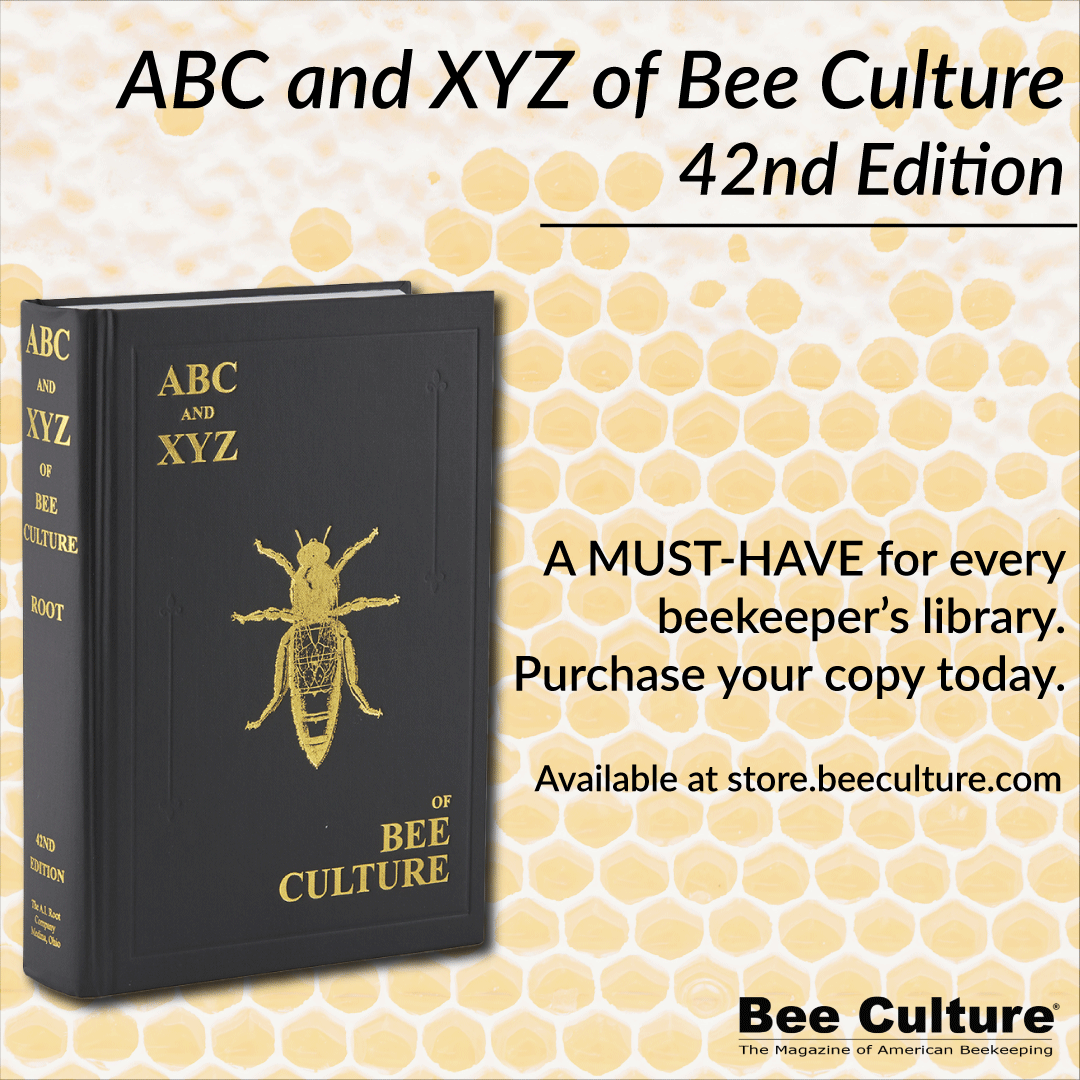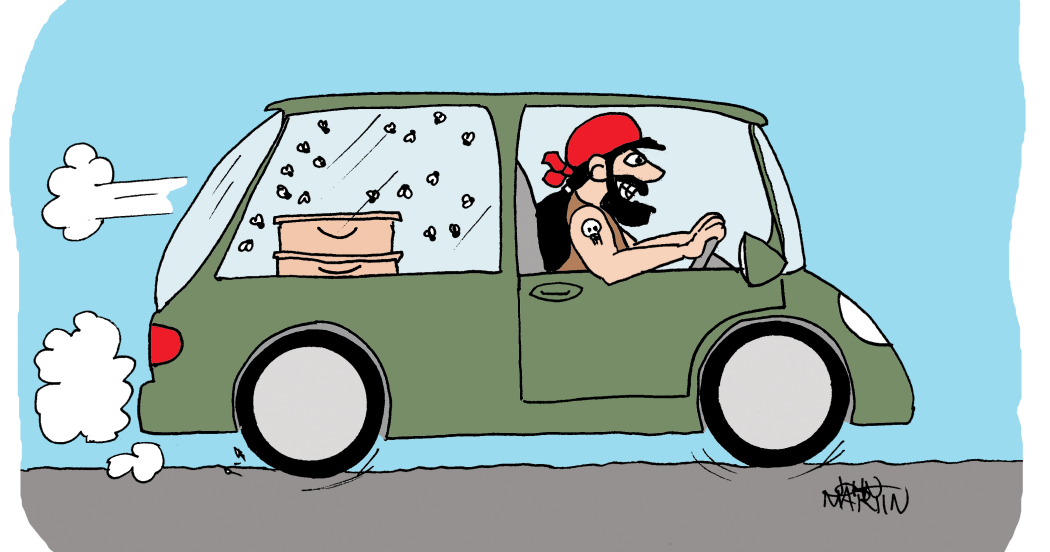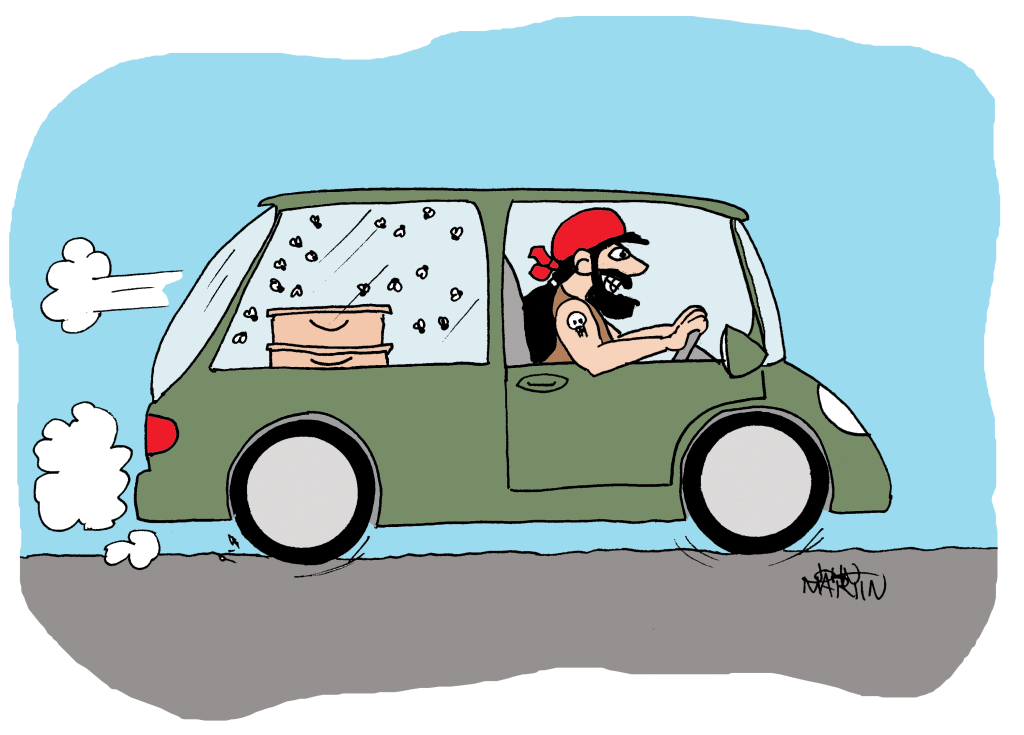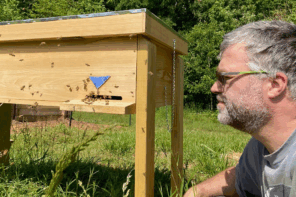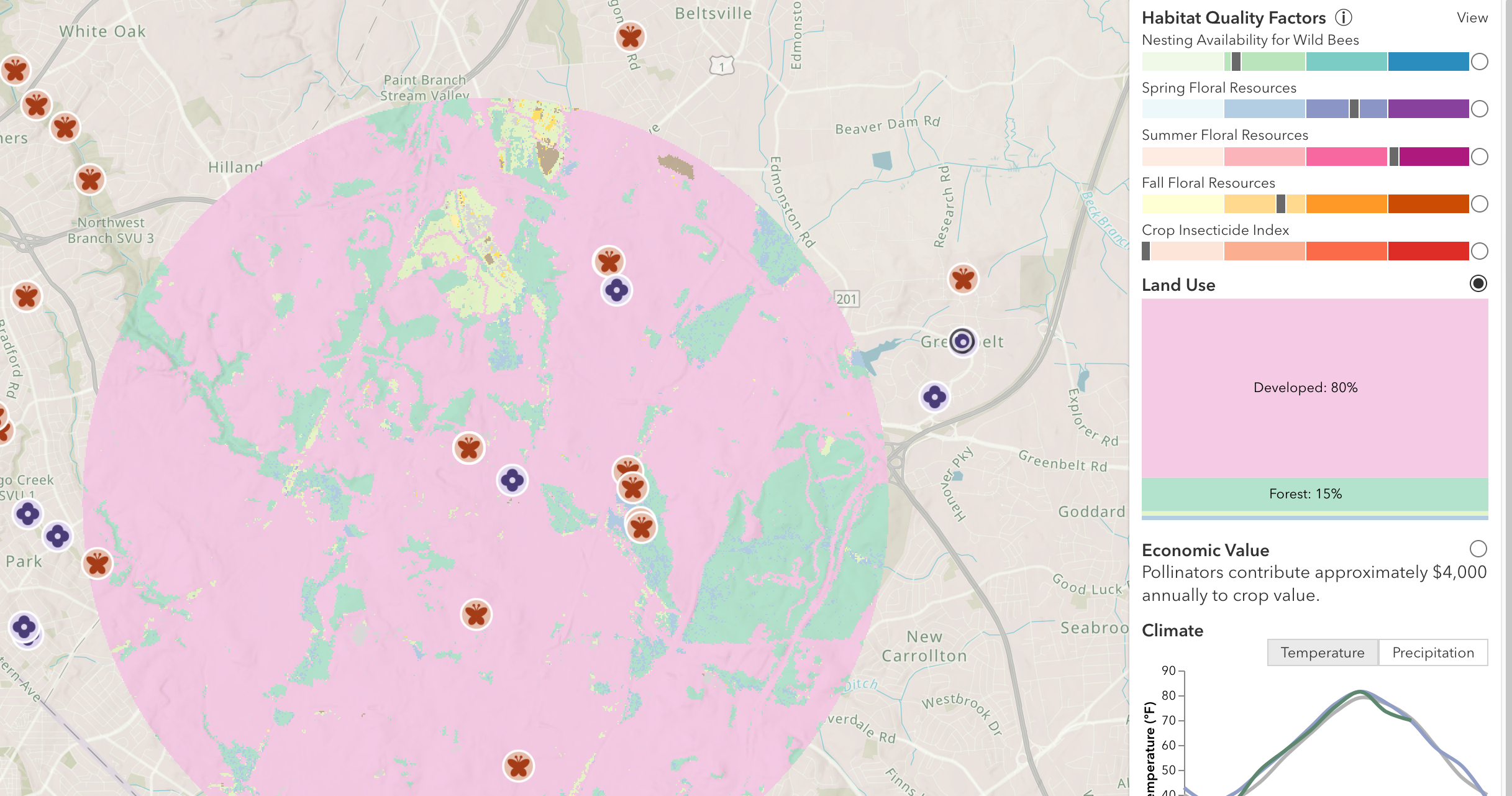Click Here if you listened. We’d love to know what you think. There is even a spot for feedback!
Read along below!
Bee Trucks
By: Stephen Bishop
A truck used primarily for the husbandry of honey bees is known in popular parlance as a “bee truck.” However, my wife, who is not up-to-date on trendy lingo, instead just calls it my “putt-around” truck. Why she believes I putt-around from bee yard to bee yard is beyond me — though, come to think of it, she can probably trace the movements of my truck from the pillar of smoke. The great advantage of a bee truck is that you can use it to transport a lit smoker from yard to yard and nobody gives it a second thought. In fact, if you put the smoker toward the front of the truck bed, the smoke usually blends right in with the engine smoke.
Indeed, part of the pleasure in owning a bee truck is performing roadside maintenance while enveloped in a cloud of bees. Bee trucks are usually old trucks. Most bee trucks will dependably break down at the most inopportune time, usually when you’re transporting your meanest hive to a faraway location. I blame the modern automotive industry. Automakers no longer manufacture small trucks. About the smallest new truck you can buy now rivals the size and price tag of an Abrams tank.
Although modern armor would be a neat feature in a bee truck, it is hardly necessary for stopping all but the stoutest stingers. I have safely sheltered in my bee truck many times, and it has nearly always protected me. The only time bees penetrated the truck’s defenses was when I forgot to roll up the window.
When Ford reintroduced the Ranger, I hoped that a small truck might reemerge from car maker exile. The old Ranger was more or less the equivalent of a go-cart with a truck bed, a nimble little truck that when stuck could easily be unstuck by gently rocking back and forth in the driver’s seat. There was no need for an extreme four-wheel-drive package because the Ranger was so lightweight you could tie a tissue to the antenna and the truck would sail away. But the new Ranger is not small, and Ford even admits as much. They market it as a “mid-size” truck, which means it’s the same size as a mammoth truck a decade ago.
One of my bee friends recently bought a small, if not miniature, truck of some obscure foreign make that is nearly perfect for a bee truck. It looks like a cross between a John Deere Gator and a Fisher Price Power Wheels. The only problem with the truck is that the steering wheel is on the opposite side so people confuse him with the mailman.
Some people use old cars as bee trucks. Cars can be an adequate substitute so long as you make modifications to give the car a tough, rugged appearance. One local beekeeper here uses an old hatchback Honda Civic as a bee truck and is always sure to wear a red paisley bandana.
In conclusion, I like bee trucks — no matter their make and model — and I believe all bee trucks should be celebrated, even if your spouse sometimes derides it as a mere “putt-around” truck instead of a truck of industry. Speaking of spouses, the best way to acquire funding for a bee truck is to get married. Any rational spouse will quickly divert discretionary income to your bee-truck fund if you promise to degum the steering wheel of propolis and deodorize the interior of the minivan since it smells like the inside of an industrial smokestack. Or you could just forgo budgetary discussions and commandeer the minivan into permanent bee truck service and see if your spouse notices. Of course, if that doesn’t work, hiring a good divorce attorney to procure funds for your bee truck is also a viable option.



